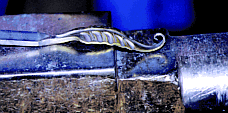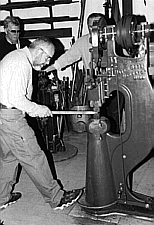
1. Any size barstock can be used for this particular project. The piece I
am using here is 5/16" x 3/4". The tip is forged down to a point. Note: This
is a 25-lb. Little Giant power hammer with a new mechanical brake system
designed by Sid Suedmeier of the Little Giant Company. |
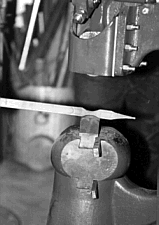
2. A neck is forged utilizing the dome side of the die. |
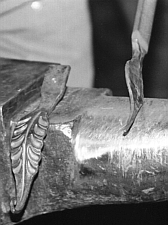
3. The forging is further refined using hammer and anvil. Finished sample
element visible on anvil step. |
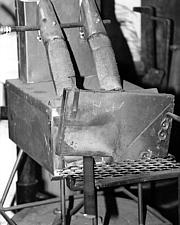
4. The piece is put back into the forge. This is one of the forges that I
designed at Scandia Laboratories. Early example of the recuperative gas-fired
forge, well used (for 8 years), every day. Blueprints and test data available
from ABANA. Quiet, efficient, forge welds easily. |
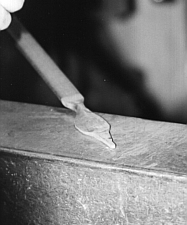
5. The piece is brought out of the fire and edges thinned down on the anvil
face. |
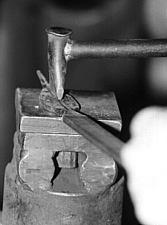
6. Utilizing a handled fullering tool and a treadle hammer, the center vein
is formed. |
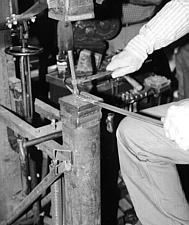
7. This shows the treadle hammer in use. |
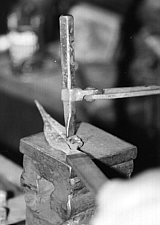
8. A curved tear drop chisel is used to start the side veins. |
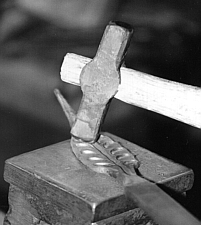
9. A handled side cut tool is further used to define viens. |
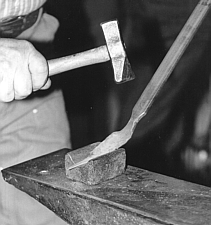
10. A bottom swedge is used in the anvil hardy hole to form the curve of
the leaf with a handmade angle pein hammer. |
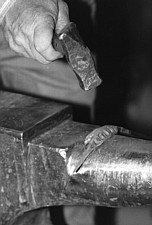
11. It is further defined over the horn of the anvil to achieve a compound
curve. |
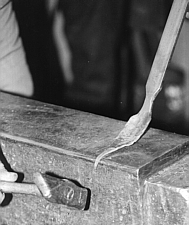
12. The scroll at the end is started over the anvil edge. |
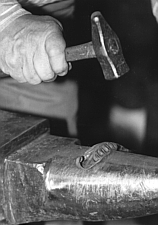
13. And further refined over the horn. |
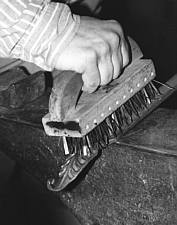
14. The piece is constantly wire brushed to remove scale. |
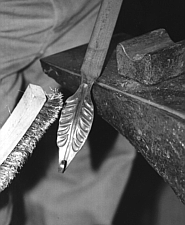
15. A fine brass wire brush is used while the piece is at a black heat to
burnish it with a bronze motif. |
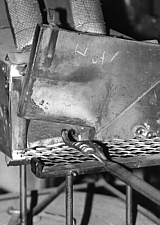
16. The patina can be darkened by putting it back into the forge for just
a moment. |
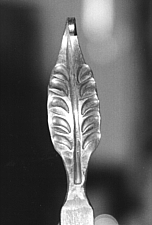
17. And there is your finished product!
This element would typically be used in a
gate or to decorate furniture or light fixtures. |
